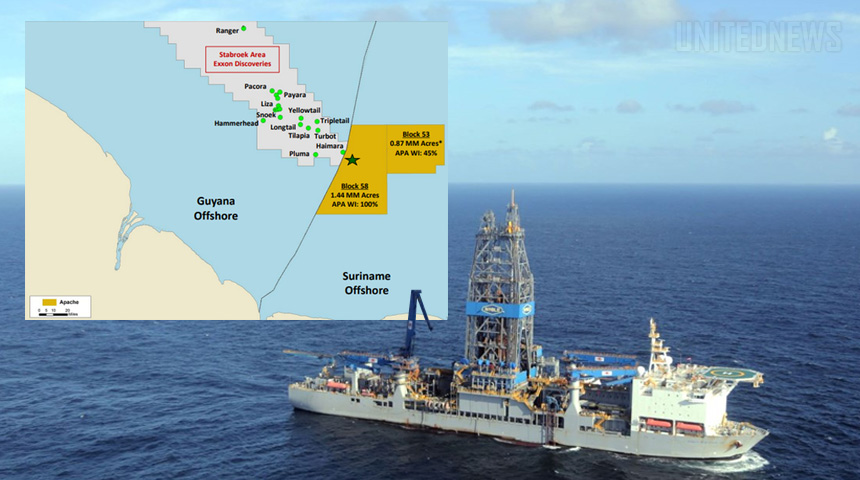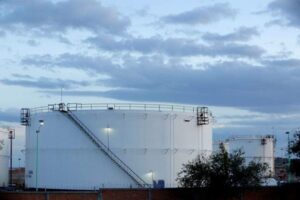
(Oilprice.com, 7.May.2020) — Oil majors may be slashing spending and deferring development plans across the globe, but they remain committed to developing the newest offshore oil finds in the heart of Latin America.
The oil price collapse has forced the world’s oil companies to slash spending and curb production at many projects that are uneconomical at the current prices. From Russia and Nigeria to the Permian basin in the United States, companies are scaling back output, either because of the new OPEC+ pact or because of economics.
While production in the U.S. shale plays has started to decline in response to the low oil prices, development plans for the major offshore oil discoveries in Guyana and Suriname remain unchanged, with operators reiterating their pre-crash plans in the Q1 earnings releases.
The price crash has upended production plans across the U.S. shale patch, but Guyana and Suriname were spared the ax, as independent energy analyst and consultant David Blackmon writes for Forbes.
Long-Term Potential in Offshore Oil Projects
These operators continue to view the oil discoveries offshore Guyana and Suriname as high-quality resources that deserve the full attention and financing even as oil prices are sitting below $30 a barrel. Abundant quality offshore resources could pump oil for decades, compared to a year or two of the wells in the U.S. shale patch, which are much cheaper and faster to design, drill, and develop, but which deplete much quicker than large offshore reservoirs.
For this reason, it shouldn’t come as a surprise that Exxon said at the earnings call last week that it would be cutting production in the Permian, yet going full-steam ahead with the developments in Guyana.
Exxon Doubles Down on Guyana’s Huge Oil Discoveries
“Guyana remains an integral part of our long-term growth plans and as such is a high priority,” Exxon’s chairman and chief executive officer Darren Woods said on the call.
Operations at Liza Phase 1 have been largely unaffected by the COVID-19 pandemic, Exxon said. Thanks to the Liza Phase 1 development, Guyana officially joined the ranks of oil-producing nations at the end of December. Exxon and its partner, Hess Corporation, now believe that the recoverable resource base from 16 oil discoveries offshore Guyana is more than 8 billion oil-equivalent barrels.
Liza Phase 1 continues to ramp up production, which is expected to reach full capacity of 120,000 bpd in June 2020, Exxon said last week. In addition, Liza Phase 2 development is carrying on as planned and remains on schedule for start-up in 2022. Exxon is also working with the Guyana government on the approval of the field development plan (FDP) for another discovery, Paraya, the U.S. supermajor said.
“Unfortunately, the ongoing election process and uncertainty around the next administration has slowed government approvals of the Payara development plan,” Exxon’s Woods said on the earnings call last week.
“The review of the Payara FDP is fairly advanced,” but talks continue, Mark Bynoe, Director of Guyana’s Department of Energy, said this week.
The government of Guyana has also just deposited the first royalty payment for Guyana’s crude, worth the equivalent of US$4.9 million, into the country’s Natural Resources Fund (NRF), with the next deposit expected to be made at end-July.
Guyana’s crude is also attracting the largest commodity trading houses and oil majors willing to market the oil to which the government is entitled. As many as 34 firms–including Shell, which lifted Guyana’s first oil cargoes; Exxon; and even Aramco Trading–expressed interest in April to market Guyana’s share of the oil from the Exxon-operated Liza development, Stabroek News reported last month.
Apache Bets on its Major Oil Discoveries Offshore Suriname
Guyana’s neighbor to the east, Suriname, has also shown great potential for holding considerable offshore oil resources. The companies that are exploring Suriname’s waters, Apache Corporation and Total, are also reaffirming their pre-crisis plans for well drilling and appraisal.
Arnaud Breuillac, President, Exploration & Production at Total, described the Guyana-Suriname Basin as “a highly favorable petroleum province,” when Total entered in December the Block 58 offshore Suriname to partner with Apache. Four months later, Apache and Total had already announced two major oil discoveries that could turn Suriname into an oil producer the same way that significant oil discoveries made its neighbor Guyana the world’s newest oil producer.
Apache, which vowed discipline and prioritizing investment for long-term returns over production growth, said in its Q1 results release this week that it would advance the exploration program and follow-on appraisal activity in Block 58 offshore Suriname.
Apache began drilling its third exploration well in the second half of April, and it will be followed by a fourth exploration well. The corporation will also finalize and submit this quarter the appraisal plan for its first Suriname discovery, Maka, announced in January, while appraisal planning for the second discovery announced in early April is underway, the company said.
The reaffirmed commitment to the Guyana-Suriname basin highlights the companies’ views that it is a top-quality high-resource area worth developing for long-term returns.
— By Tsvetana Paraskova
***

